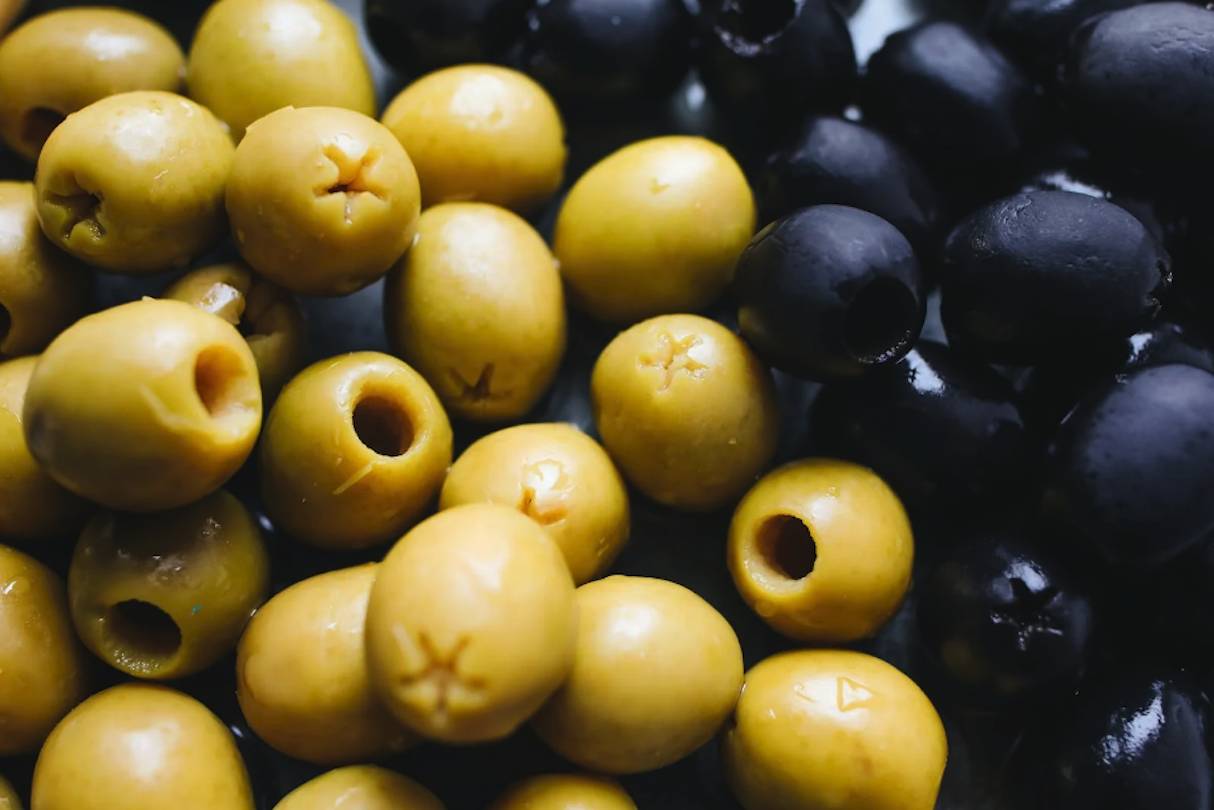
Portuguese Olives
Portuguese olives are renowned for their exceptional quality and taste. Portugal has a long tradition of olive cultivation, and olives are an important part of the country's culinary and agricultural heritage. The climate and soil conditions in Portugal create an ideal environment for growing olives, resulting in high-quality fruit with a rich flavour.
Portugal boasts a rich variety of olives, each with its distinct characteristics and culinary uses. Here are some of the different varieties of Portuguese olives:
Galega
One of the most common and traditional olive varieties in Portugal. Galega olives are small to medium-sized with a rounded shape and a slightly wrinkled appearance. They are primarily used for olive oil production but are also enjoyed as table olives.
Cobrançosa
This variety is highly valued for its oil content and rich flavour profile. Cobrançosa olives are medium-sized and have an elongated shape. The resulting olive oil is often described as fruity and slightly spicy.
Cordovil
Cordovil olives are medium-sized with an oval shape and a pointed tip. They are popular for both table olives and oil production. The oil produced from Cordovil olives has a balanced taste with a touch of bitterness and pungency.
Verdeal
Verdeal olives are large and round with a greenish-yellow colour. They are mainly used as table olives, often served in Portuguese cuisine as appetizers or accompaniments to meals.
Madural
Madural olives are medium to large-sized with an oval shape. They are primarily used for olive oil production and contribute to oil with a fruity and slightly bitter taste.
Carrasquenha
Carrasquenha olives are small to medium-sized and have an elongated shape. They are used for both olive oil production and pickling.
Redondal
Redondal olives are medium-sized and round, with a red hue when fully ripe. They are usually used for table olives and are known for their sweet and mild flavour.
Negrinha de Freixo
This variety is small and dark, almost black when fully ripe. Negrinha de Freixo olives are commonly used for table olives, often found in traditional Portuguese dishes.
These are just a few examples of the diverse range of olive varieties grown in Portugal. Each variety brings its unique taste and texture, contributing to Portugal's reputation for producing excellent olives and olive products. Whether for table olives or olive oil, Portuguese olives are cherished both domestically and internationally for their exceptional quality.
Olives in Portugal are typically hand-picked to ensure the best quality and to prevent damage to the fruit. The harvesting process usually takes place during the autumn months when the olives have reached their optimum ripeness. Here's an overview of how olives are picked in Portugal:
Hand Harvesting
Hand-picking is the most common method used for harvesting olives in Portugal. Skilled workers, often aided by small rakes or handheld tools, carefully pick the olives from the trees. This method allows for selective harvesting, ensuring that only fully ripe olives are collected.
Traditional Methods In some regions, especially in smaller olive groves or family-owned orchards, traditional methods may be employed. This can include gently shaking the branches or using long poles with hooks to reach and remove olives from higher branches.
Ground Nets
To prevent olives from falling onto the ground and potentially getting damaged, large nets are often spread beneath the trees. The picked olives fall onto these nets, making it easier to collect and transport them.
Collection and Sorting
Once the olives are picked, they are carefully gathered from the ground nets or collected in containers. At this stage, any damaged or unripe olives are sorted out to ensure only the best-quality fruit makes it to further processing.
Olive Processing
After harvesting, the olives are transported to olive mills for processing. Depending on the desired end product, the olives may be used for olive oil production or preserved as table olives through brining or other preservation methods.
It's essential to pick olives at the right time, as both unripe and overripe olives can affect the quality and taste of the final product. Hand-picking allows for a delicate and selective harvest, preserving the olives' integrity and contributing to the superior quality of Portuguese olives and olive products.
In Portugal, olives are traditionally harvested using a combination of hand-picking and mechanical methods. The harvesting process typically takes place during the autumn months when the olives have reached the desired level of ripeness. Here's an overview of how olives are picked in Portugal.
Hand Harvesting
Hand-picking remains a significant part of olive harvesting in Portugal, especially for premium olive oil and table olives. Skilled labourers or farmers carefully pick the olives by hand, selecting only the fully ripe ones and leaving behind unripe or damaged fruit. Hand harvesting ensures the best quality olives are collected and minimizes potential damage to the branches and trees.
Mechanical Shakers
In larger olive groves or commercial plantations, mechanical shakers are often used to facilitate the harvesting process. These shakers are machines that gently shake the olive tree branches, causing the ripe olives to fall onto large nets or tarps spread around the trees. The mechanical shaking process speeds up the harvesting and makes it more efficient for large-scale production.
Combs or Rakes
In some cases, small handheld combs or rakes may be used in conjunction with hand-picking to gently comb the olives off the branches. This method is often used for specific olive cultivars that are challenging to pick by hand or where the trees are pruned in a way that makes hand-picking less practical.
Ground Collection
After the olives have been harvested, they are collected from the nets or tarps on the ground. This ensures that no olives are lost and minimizes waste during the harvesting process.
Sorting and Processing
Once the olives are collected, they undergo a sorting process to remove any leaves, stems, or damaged fruit. The sorted olives are then transported to olive mills for further processing, depending on their intended use, whether it's for olive oil production or table olives.
It's essential to pick olives at the right stage of ripeness to achieve the desired flavour and quality of the final product. The combination of hand-picking and mechanical harvesting methods allows Portugal to efficiently produce high-quality olives and olive products, maintaining its reputation for exceptional olive-based offerings.
